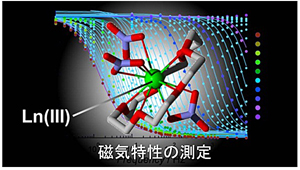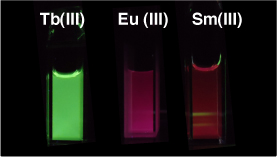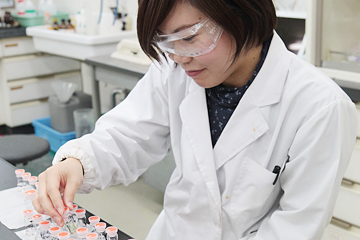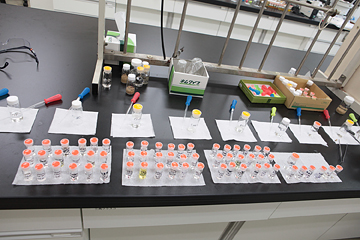Laboratory of material chemistry
3 | ① Research on the physical properties of nano-sized metal-complexes in a solid state
② Study of molecular recognition/sensing with luminescent lanthanide complexes and of their luminescent properties
Fifteen elements from La (Lanthanum) to Lu (Lutetium) are known as “lanthanoides”. Lanthanoide ions form variety of complexes having different structure, and they exhibits specific physical features such as unique magnetism and strong emissions. These features are originated from the intrinsic nature of the 4 f electron(s), and they are controllable by the slight modification of the structure. Owing to the facility of structural design, lanthanoide complex are attracted much attention to be functional materials for the next-generations.
We are synthesizing novel lanthanoide complexes in our lab, aiming at the generations of novel “single molecule magnets (SMMs)” and “molecular-based luminescent sensors”. Their structures are finely determined by means of crystallographic and spectroscopic methods, and their unique properties are revealed from the physical measurements of magnetic susceptibility, neutron scattering, optical spectrometry, and so on.
Very recently, we have successfully synthesized Dy(III)-based and Ce(III)-based SMMs; the former shows extremely slow magnetic relaxation which reaches to several hours, and the latter is the first example of the light lanthanoide-based SMM of which the magnetic behaviors are originated from only one f-electron.
As a molecular-based sensor, we are targeting the deformable (or soft) molecules which can exhibit strong luminescence under appropriate conditions, aiming to probe the specific substrates such as anions, cations, protein, and so on, in vivo or in vitro.




